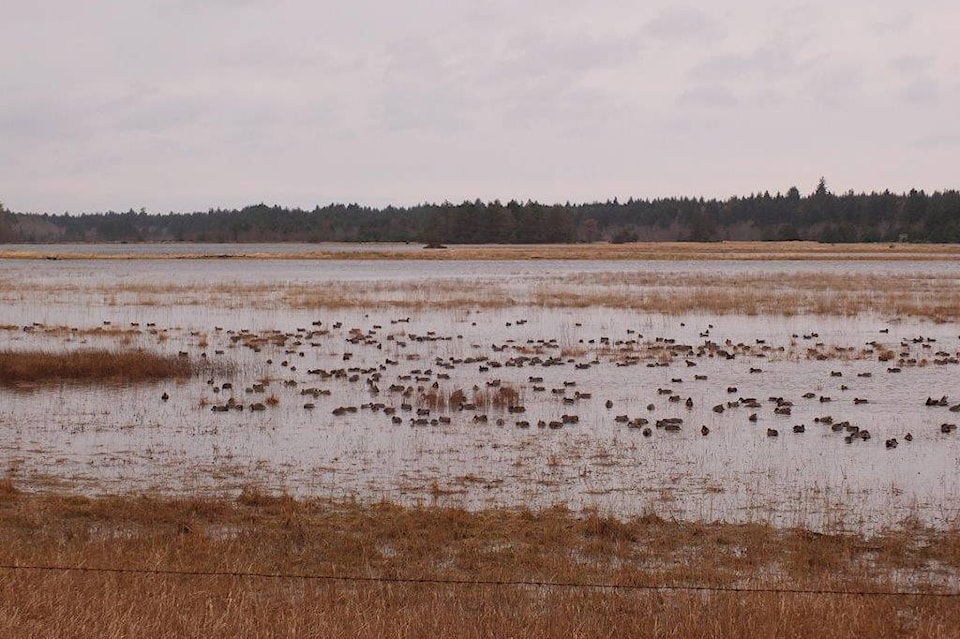By Margo Hearne
The big tides of the past week created quite a show for the many ducks that come and go from Delkatla. The dabblers fed in what was once dry meadow and the divers had a field day. But what do we know about snipe? We know they nest in wet meadows and long grass near water and we believe that they are not endangered, but they don’t usually spend the winter in as large numbers as we have recorded recently. There are years when we are lucky to see one during the winter counts, but this year we had ninety-six. The mild weather, constant winter storms and a high water table seems to have created perfect conditions for them. They love sedge meadows and marshy ground. In the 1980’s they used to be heard ‘winnowing’ over Delkatla in summer. They flew high and, as they dove, the wind riffled through their tail feathers creating a distinctive ‘whe-whe-whe.’ It was their aerial, territorial dance.
One of the things about the Wilson’s Snipe is that they are really hard to see and because they are so secretive, little is known of their life history. They don’t wander around in the open waiting to be photographed but hide in the long sedge grass until almost stepped on. Then they take off with a harsh ‘scresh’ and dart away, zig-zagging low and landing quickly somewhere else. There’s little point in trying to find them because they run off and hide until they are almost underfoot again. It can be startling, especially when creeping up on a rare bird to get a photo. Goodbye to all that.
Snipe have a really long bill and very short legs. They are sometimes seen in town probing with their long bill through the soft moss of what was once a grass lawn. It suits the bird, they eat earthworms, crane fly larva, beetles and other bugs so they are to be encouraged. This winter they have come in from somewhere else; the high numbers attest to their ability to fly long distances.
Gadwall ducks have returned this year. Their numbers had gone down in the past three to four years but this year thirty-seven floated in the quiet waters of the back ponds with American Wigeon and Green-winged Teal. A tidy-looking duck, they have more of a round-head, short-necked appearance than either a Mallard or pintail. They have pale to dark grey sides, a black tail and a light grey head which makes us wonder what we saw with them a few weeks ago. It was a little smaller, had grey sides but a reddish head. We can only conclude that it was some kind of gadwall/teal hybrid. Ducks do dabble with other ducks and sometimes dive into uncharted waters.
